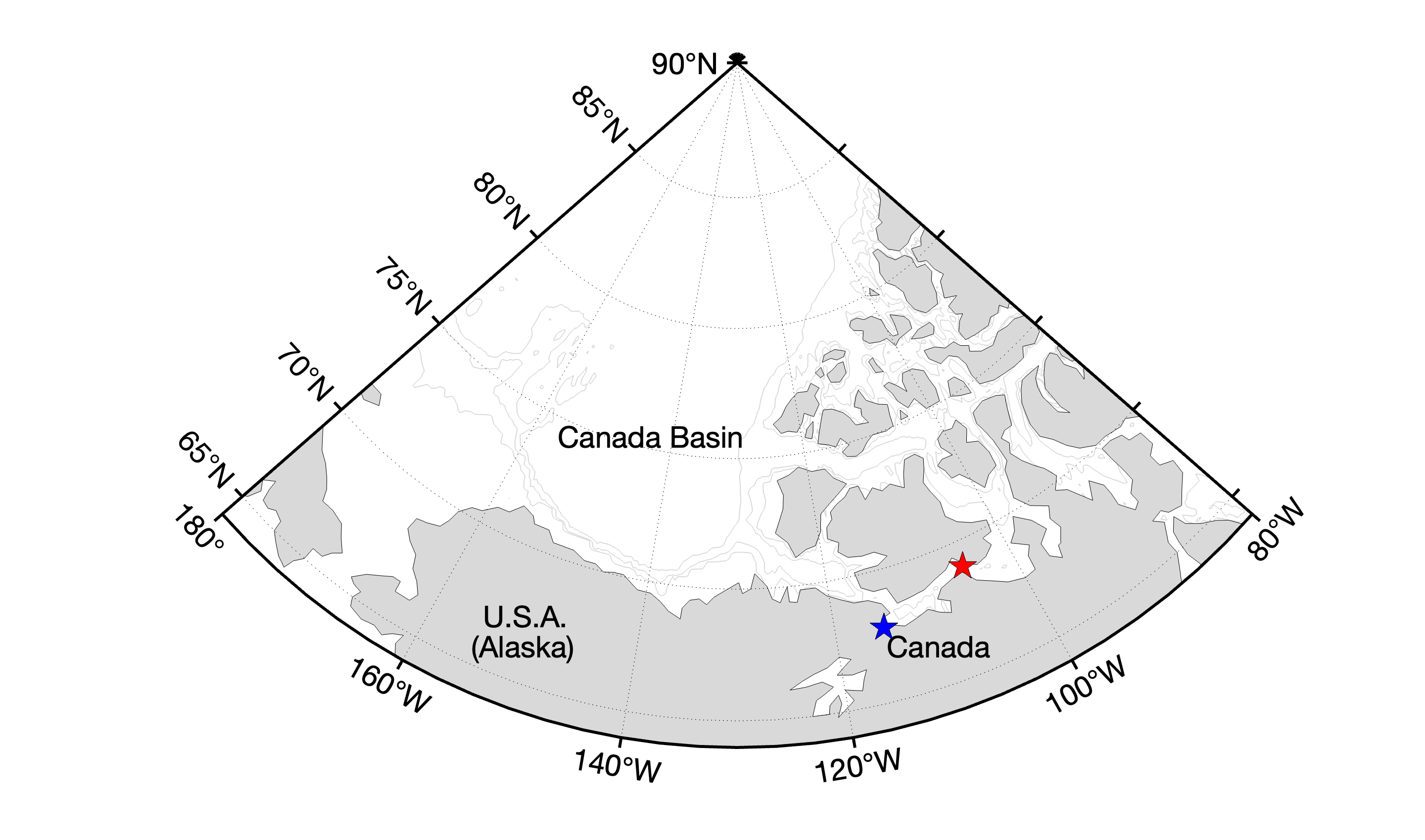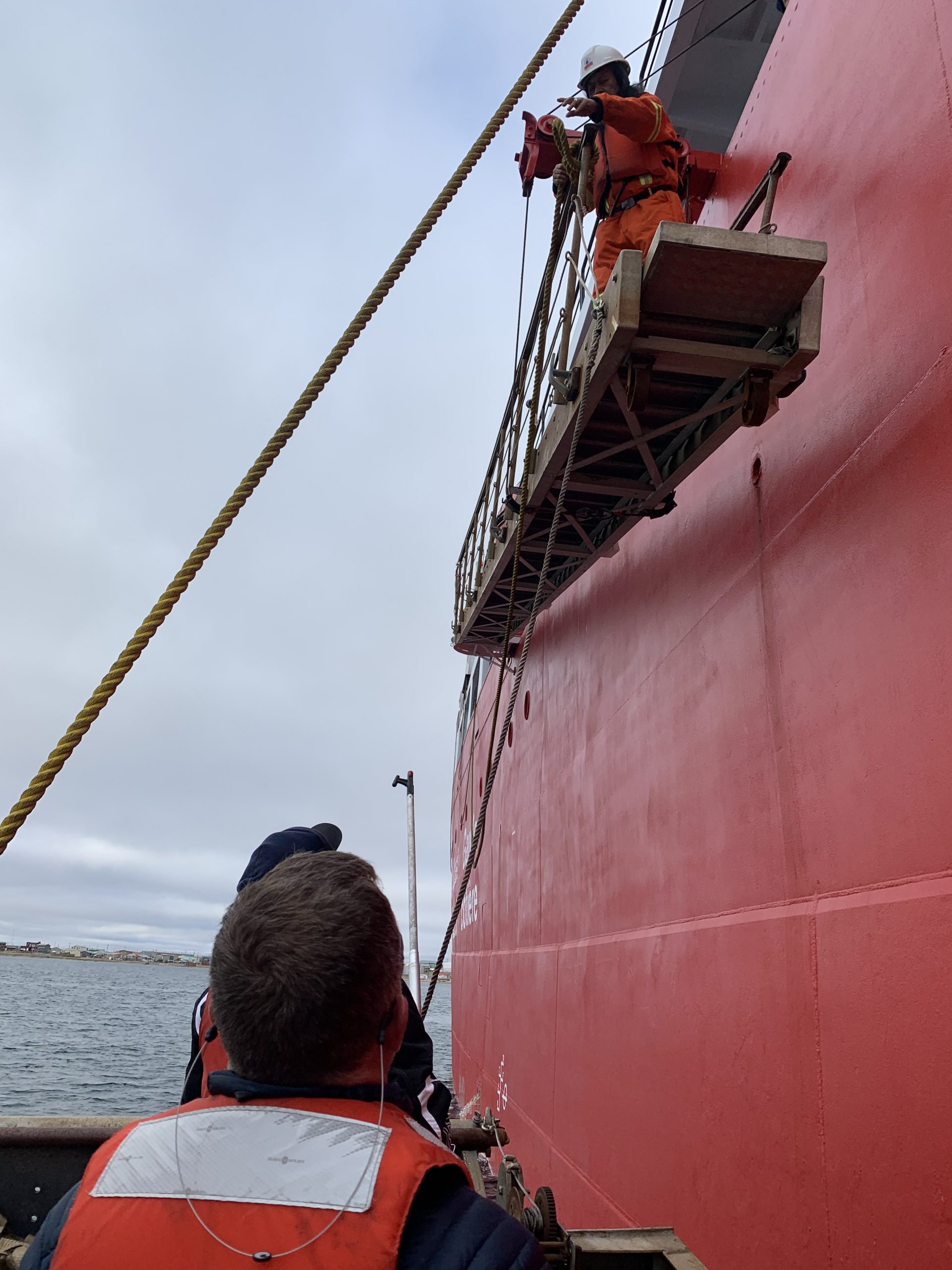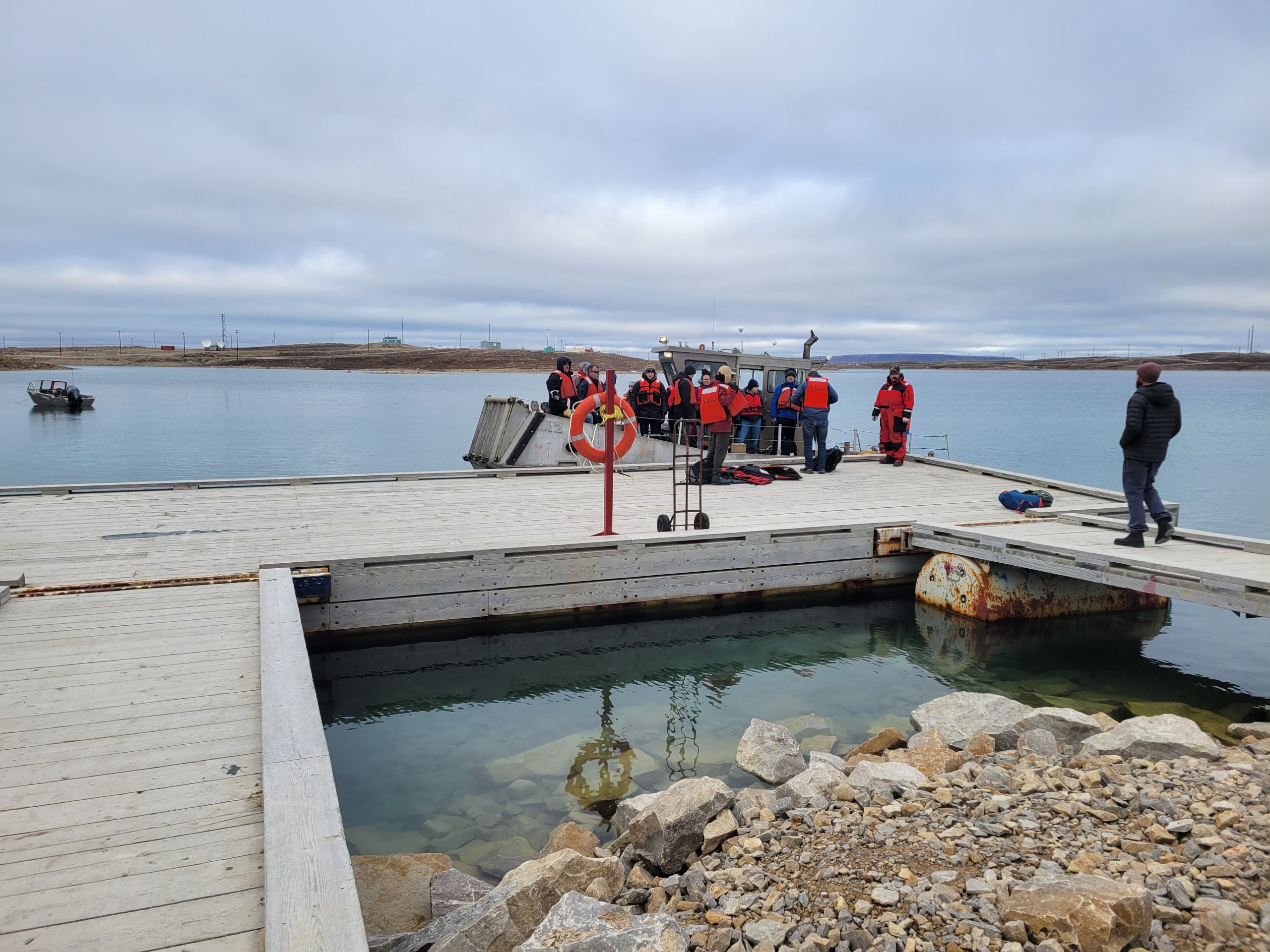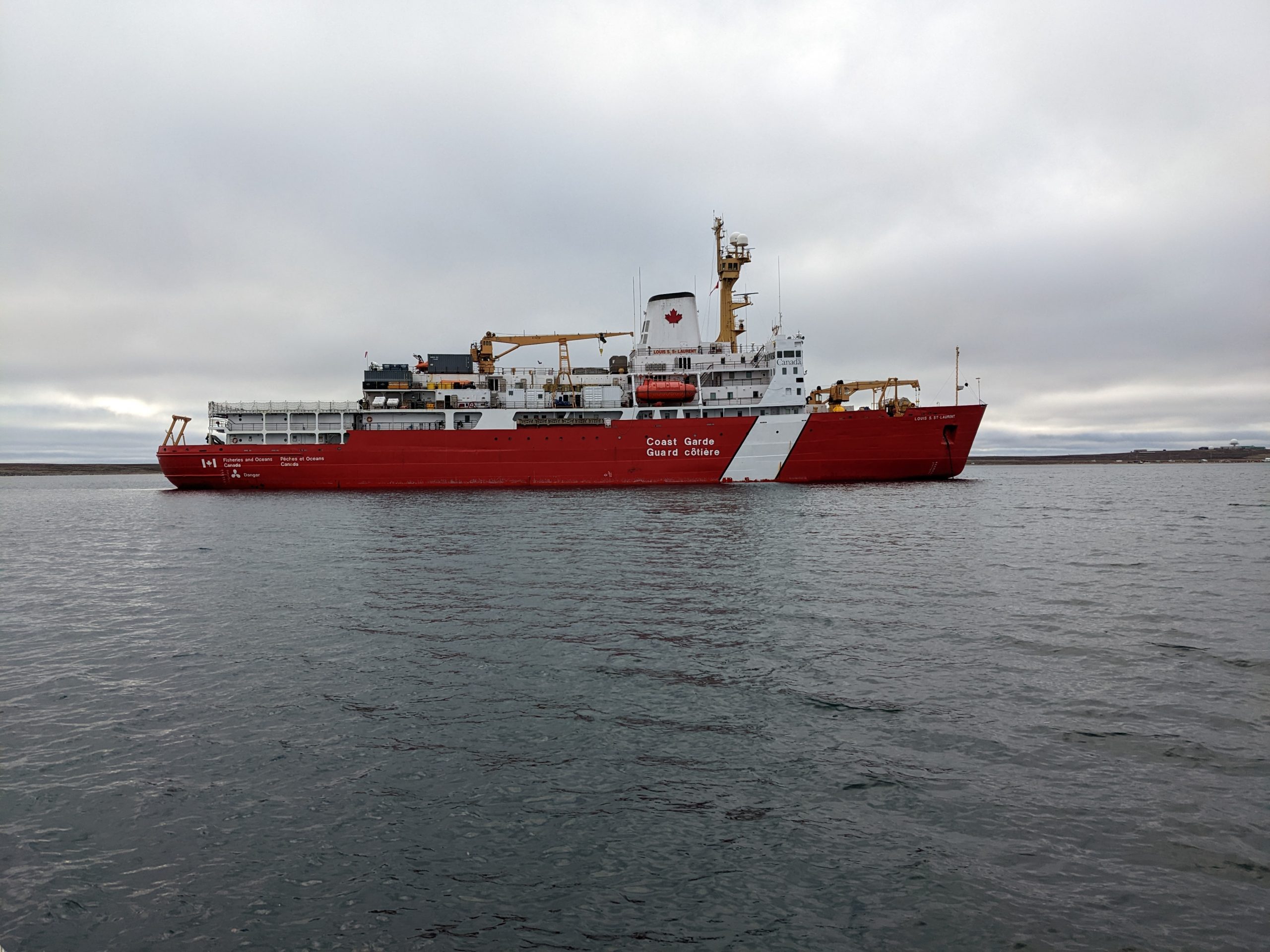Dispatch 1: All Aboard for the 20th Year!
Ashley Arroyo and Elizabeth Bailey
September 16, 2022
Yesterday was the day we have all been waiting for – the day we boarded the ship! This is Ashley Arroyo and Elizabeth Bailey graduate students from Yale University, and this will be our first expedition on the Canadian Coast Guard Ship Louis S. St-Laurent, our home for the next month. For the duration of the trip, we will be documenting all things Arctic, polar science, life on the icebreaker, and more! Our core science mission is to make measurements and document the changing ocean and sea-ice system, from its physics to chemistry to biology and ecosystems.
The project to study the Arctic’s Beaufort Gyre centered in the Canada Basin is a long-standing collaboration between US and Canadian Scientists called the Beaufort Gyre Observing System (BGOS)/Joint Ocean Ice Study (JOIS). Under this collaboration, annual scientific expeditions on the Louis to the Beaufort Gyre region have taken place since 2003, making this our 20th year. Observing, analyzing, and learning about this key region of the Arctic Ocean is crucial because its rapid evolution under climate change (including Arctic sea-ice decline) has an important influence on global climate. In addition, Arctic communities, who depend on the ocean and its marine ecosystem, are influenced by the effects of a physically and biogeochemically changing Beaufort Gyre system. More on this will be found in our daily dispatches to come, where we’ll focus on different aspects of the science we’re doing and its implications.
For now, we are happy to all be on board safely, a total of 26 scientists plus the Louis’ crew. Due to a recent change of plans, the science team needed to travel from their home-bases in the south to Cambridge Bay (see map) instead of Kugluktuk to board the ship so there was some flight shuffling. It was a long day of traveling for all – but getting a glimpse of the Louis from the plane whilst landing in Cambridge Bay made us all excited for what’s to come. Upon leaving the airport in Cambridge Bay, we took a shuttle to a barge in groups of fifteen. From there, the barge took us to the ship where we climbed aboard. For all of us first-timers on the Louis, Sarah Zimmermann gave us a tour of the ship and all the important areas for the science team. We rounded out the day with our first science meeting, introducing ourselves and discussing the roles for the team.
Today, we’ll have our safety trainings and formal introduction to the ship. This will include training on how to use the instruments, testing them, and getting acquainted with our individual responsibilities. We are excited to kick things off by leaving Cambridge Bay this afternoon to head to our first science station!




